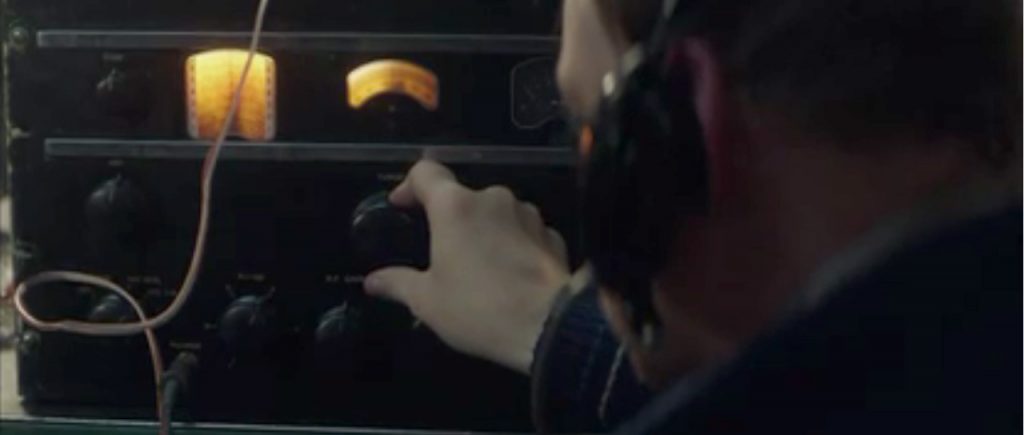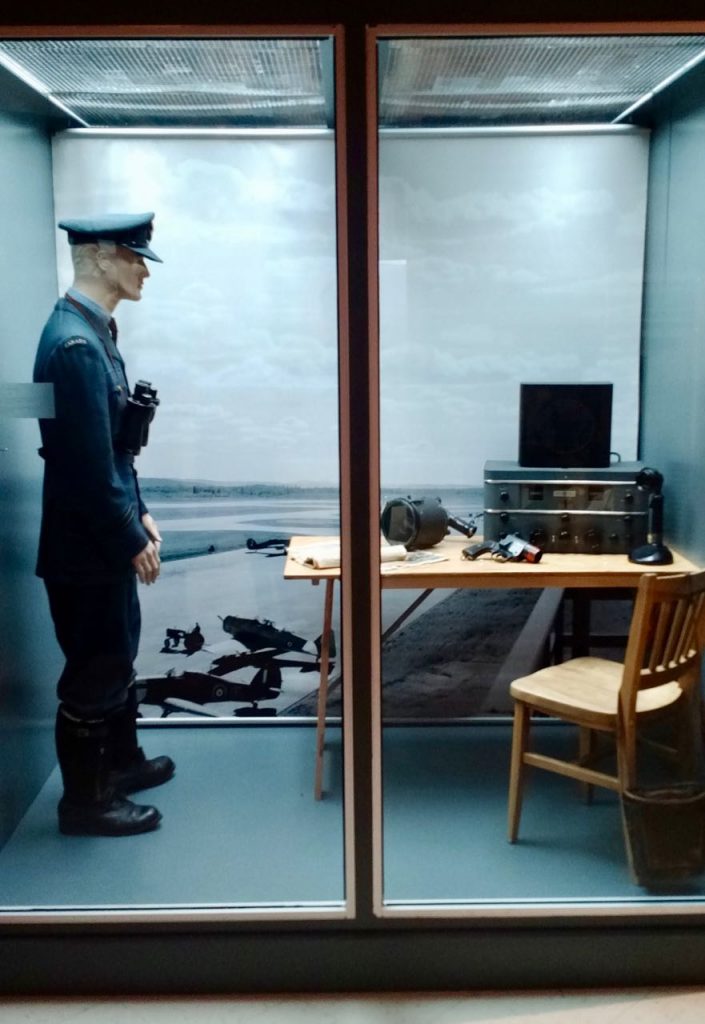Many thanks to SWLing Post contributor, Mike Hansgen (K8RAT), who adds the following to our growing archive of radios in film. Mike writes:
Near the end of the current episode of “Prime Suspect: Tennison” [the radio operator mentions] he was listening on “the RCA 88”.
“Tennison” is set around the early ’70’s.
Great catch, Mike (and thanks to Eric WD8RIF for the screen cap).
According to the Crypto Museum:
The AR-88 was a valve-based shortwave general coverage communications receiver, developed and built by the Radio Corporation of America (RCA) in the early 1940s. Although the receiver was initially intended as the successor to the AR-77 amateur receiver, the outbreak of WWII made it evolve into a professional high-end military-grade receiver for which cost was no object.
The AR-88 is a 14-valve (tube) receiver, which covers a frequency range of 535 kHz to 32 MHz. Unlike the National HRO receiver, which had pluggable coil packs for each frequency band, the AR-88 uses a six-position band selector. A special version of the receiver, the AR-88LF, was suitable for LF and MF, covering 70 to 550 kHz (continuously) and 1.5 to 30 MHz (continuously).
Continue reading at the Crypto Museum online…
The Crypto Museum photo of the AR-88 jogged my memory…
Last year, I visited the Musée de la Défense Aérienne at the Canadian Forces Base (CFB) Bagotville (a museum I wholeheartedly recommend, by the way).
I snapped this shot of this display:
I’m sure I actually have a close up of this receiver somewhere. It also appears to be an RCA AR-88 based on dial and control configuration, though I certainly could be wrong.
Do any SWLing Post readers have an AR-88? Please comment!



It’s not an AR88 receiver.
This looks exactly like the two AR-77 receivers I have here. A few years earlier vintage than the AR-88 and about 50 lbs lighter!
Close…it’s an AR77 … a (much) lower cost general coverage rx .
I had one some 20 years. A beautiful (but very heavy) reciever for shortwave and medium wave AM-DX. SSB was somewhat tricky because of the lack of a product detector. It was my first ‘real’ shortwave reciever and opened the worlds of shortwave and hamradio I remember the very good stability (for a tube reciever of this age) and very smooth tuning.
At the end it needed ever more repair (leaking oil-filled capacitors and the like) and in 1988 I swapped it to some other gear.
Many AR88’s have been used in GB in WWII to intercept german coded transmissions.
http://www.cryptomuseum.com/df/ar88/
https://wn.com/a.r_88
In 1972 my grade six class went to Ottawa for the day, and we took in the science museum. Ty had n AR-88 on display, actually the public could use it. The only time I’ve seen one up close.
Michael
When I was in my telecommunications apprentice training time in the 1950s the engineer who was training me was always talking about his military days , and often talked about the Ack-R 88 as he called it. He used to tell me the enemy (won’t mention names!) often used the same frequency to make their field broadcasts, and how after a while he used to shout at ‘the enemy’ to get off the air so he could make his field reports! As a lad it was amusing for me but maybe it was just his romantic notion for story telling, of which he had many. The AR 88 always stayed in my mind from his stories, so it is nice to actually see what the set looks like.
Thanks
Lawrence